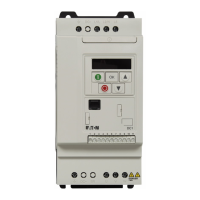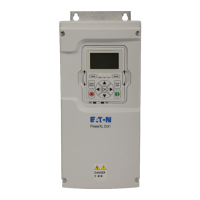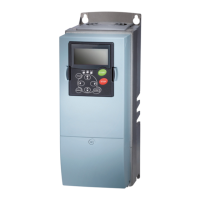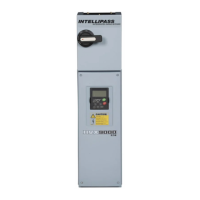2 Engineering
2.10 STO function
68 DA1 Variable Frequency Drives 11/16 MN04020005Z-EN www.eaton.com
2.10.9 Regular maintenance
The STO function should always be included in a scheduled maintenance
process (at least once per year) so that the function will be tested on a
regular basis to make sure it is intact and complete – especially after changes
are made to the safety system and after repairs are made.
During the corresponding inspection and testing, the variable frequency
drive’s installation and operating environment must be checked:
• The ambient temperature must fall within the admissible range.
• The heat sink and fan must be free of dust and other foreign particles.
The fan must be able to rotate freely.
• The enclosure in which the variable frequency drive is installed must be
free of dust and condensate.
• The enclosure fan and air filter must provide the required airflow.
• All electrical connections must be checked:
The screw terminals must be properly tightened and the power cables
must not show any signs of heat damage.
2.10.10 “Safe stop” function
The purpose of the STO function is to prevent the drive from making the
motor produce a torque when there is no input signal at terminals 12 and 13.
This makes it possible to integrate the drive into a complete safety system in
which the “safe stop” function needs to be fully implemented.
The STO function eliminates the need to use electro-mechanical contactors
with self-monitoring auxiliary contacts in order to implement safety
functions.
DANGER
The STO function cannot prevent unexpected restarting or
automatic restarting (if the corresponding parameters are
configured for this type of restarting). Accordingly, it must not be
used to perform maintenance or cleaning work on the machine.
DANGER
In certain applications, additional measuring and monitoring
equipment may be needed in order to meet the requirements
for the system’s safety function.
The STO function does not include motor braking, and the
DA1’s braking function cannot be considered a fail-safe method
by itself.
If a motor braking function is required, an appropriate safety
relay and/or a mechanical braking system or a similar method
must be used.

